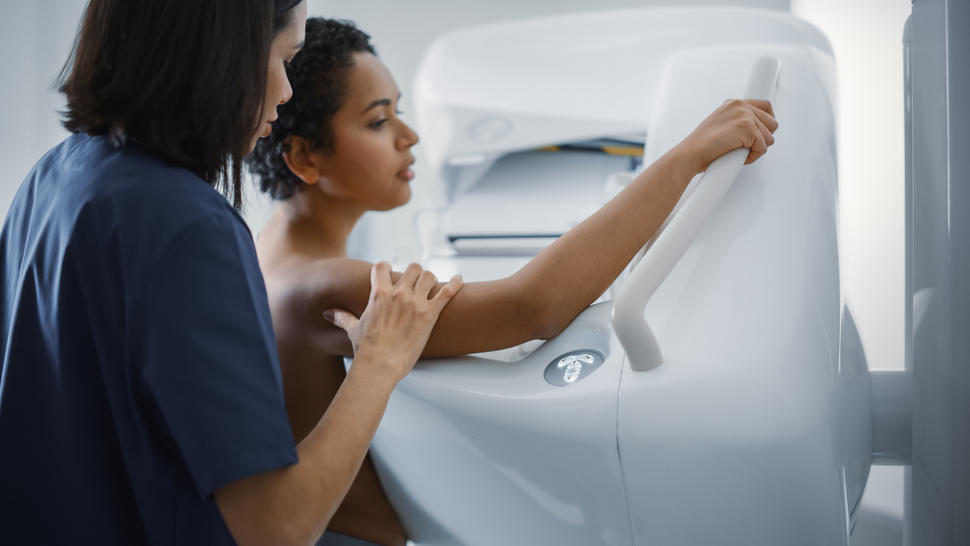What Happens If More People Get Screened for Cancer?
, by Edward Winstead
Cancer screening tests can help doctors find several forms of the disease at an early stage. The US Preventive Services Task Force (USPSTF) recommends routine screening for breast, cervical, colorectal, and lung cancer. But the proportions of eligible adults who have been screened are below national targets.
In a new study, researchers used computer modeling to estimate the number of deaths that could be prevented by increasing the use of USPSTF-recommended cancer screening tests. The study modeled a 10–percentage point increase in the use of these screening tests.
In this interview, the study’s lead author, Amy Knudsen, Ph.D., of Massachusetts General Hospital, discusses the findings, which appeared November 22 in JAMA Network Open, and their implications for cancer screening moving forward.
Why did you undertake this modeling study?
The NCI-funded Cancer Intervention and Surveillance Modeling Network (CISNET) supports teams of researchers like ours to use simulation models to answer questions about the impact of changes in screening and other prevention and cancer control measures.
Given the Biden Administration’s reignited Cancer Moonshot goal to reduce cancer deaths by at least 50% over the next 25 years, our team wondered how much of a contribution increased uptake of screening tests could make toward this goal.
What did your models show?
We looked at a 10–percentage point increase in the use of USPSTF-recommended screening among eligible US residents in 2021, assuming those who adopt screening do so at the recommended starting age and continue screening as recommended by the USPSTF over their lifetimes.
We found that this 10–percentage point increase could prevent 1,010 deaths from lung cancer (among the 454,000 people eligible for screening in 2021), 11,070 deaths from colorectal cancer (among 3.91 million eligible), 1,790 deaths from breast cancer (among 2.18 million eligible), and 1,710 deaths from cervical cancer (among 2.13 million eligible).
Why did your team select a 10–percentage point increase in the use of these screening tests as the basis for the study?
Screening rates vary by the type of cancer. Currently, approximately 13% of people eligible for lung cancer screening are up to date with lung cancer screening recommendations, 69% of those eligible for colorectal cancer screening are current, 73% of those eligible for cervical cancer screening are current, and 76% of those eligible for breast cancer screening are current.
We opted to evaluate the impact of a 10–percentage point increase in uptake so that the magnitude of the increase was the same across all cancer screening tests, regardless of the baseline level of screening for that cancer.
For example, a 10–percentage point increase would bring the lung cancer screening rate up to 23% and the colorectal cancer screening rate to 79%. Of course, there is much more room for improvement in lung cancer screening, which the USPSTF recommended more recently than the other types of cancer screening.
How does your analysis inform our understanding of the risks or harms of screening versus its benefits?
Our analysis showed that a 10–percentage point increase in uptake of recommended screening would lead to harms, including an estimated 100,000 false–positive lung scans, 6,000 colonoscopy complications (e.g., bleeding), 300,000 false–positive mammograms, and 348,000 cervical biopsies over the lifetimes of those individuals.
Decision makers, whether they be individuals and their doctors or health care systems, must consider whether the benefits of any screening test outweigh the risks. This is particularly important for newer tests that have not yet been subject to rigorous evaluation.
Were there any surprises in the results or particular findings you would highlight?
One of the more interesting findings of our paper is that a 10–percentage-point increase in the uptake of screening strategies recommended by the USPSTF could yield a 1% reduction in lung cancer deaths, a 21% reduction in colorectal cancer deaths, a 4% reduction in breast cancer deaths, and a 40% reduction in cervical cancer deaths over the lifetimes of individuals newly eligible for screening in 2021, compared to the expected number if current trends in screening and treatment were to continue.
The large reductions in colorectal and cervical cancer deaths were initially surprising to us, but the results make sense. Unlike screening for lung and breast cancer, screening for colorectal and cervical cancer can also detect and treat the precursors to these cancers, thereby preventing the person from ever developing the disease. So, those estimated reductions represent the combined effects of the prevention and early detection abilities of colorectal and cervical cancer screening.
The small reduction in lung cancer deaths from the increased uptake of lung cancer screening was also initially surprising. It is explained by the fact that only people with a certain smoking history are eligible for lung screening, whereas recommendations for colorectal, breast, and cervical cancer screening are based solely on age.
We also found that combining lung screening with a smoking cessation program could prevent additional lung cancer deaths. Of course, stopping smoking would also prevent other tobacco-related causes of death.
Do you have any cautions about the limitations of your study?
By definition, a model can’t perfectly reflect reality, but a well-validated model can shed light on potential pathways for improvements in outcomes. We think our models can do just that.
One of the limitations of our study is that we assumed that those who undergo screening as part of the 10–percentage point increase would be screened exactly as recommended by the USPSTF. That is, we assumed that they would start screening at the recommended age, undergo repeat screening at the recommended intervals, and complete all recommended tests and procedures after an abnormal result on a screening test. Unfortunately, the real world differs from this ideal, so our results should be seen as a best-case scenario.
We also showed how results change when screening is not performed as recommended. For example, if only one colonoscopy were done at age 50, as opposed to performing colonoscopy every 10 years starting at age 45, we estimated that the number of colorectal cancer deaths prevented by a 10–percentage point increase in screening would fall by 32%.
What are the reasons for low screening rates? Do we know of ways to address them?
There are many reasons why screening rates are below national targets. Some of those reasons reflect the nature of the US health care system, including systemic biases, lack of access to medical services, and the complexities of the system.
Additionally, not all clinicians are aware of current screening recommendations and, even if they are aware, some are not recommending screening to their patients. We hope that our work makes the case that additional efforts to increase screening rates would result in fewer cancer deaths.
Is there a take-home message from your study?
The increased uptake of recommended screening strategies would help to reduce the burden of cancer in the United States. However, our findings suggest that the Biden Administration’s goal of reducing cancer deaths by 50% in 25 years will not likely be achieved by focusing solely on overall increases in the uptake of screening for breast, cervical, colorectal, and lung cancers.
Targeted efforts to increase screening test uptake among individuals at high risk of cancer death will be needed, along with advances in prevention and treatment.

